Covered by lush monsoonal forests, the ridge of the Mahabharat range in the eastern Nepal separates the fertile lowland of Terai from “Limbuwan”, the Land of the Limbus. Poetically sited below steep hillsides of the Mahabharat Lekh or dotting the rolling land of the eastern Nepal Midlands, the dispersed villages of the Limbus are found between altitudes of 2,500 to 5,000 feet above sea level. Traditionally also referred to by the Limbus themselves as the “Pallo-Kirant” or “Far-Kirant”, this region includes an area east of the Arun river and west of the Nepal-India border.
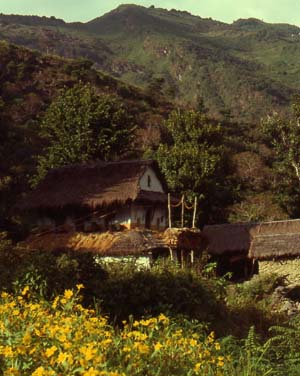 Sited conventionally amid dry cultivated fields, the yards of the Limbu houses may often be beautified by planted beds of colorful flowers. The houses are built of stone, mud packed, and characteristically washed with white and ochre mud. Typically, each Limbu house has the same type of front elevation. It is entered via a small porch, constructed like the balcony above it out of timber or bamboo. Designed with a small window above the balcony, the roof is of a gable type. Although in most instances the houses are roofed with thatch, the most prominent of the Limbus cover their houses with sun-baked shingles. For the most part, there is not much variation in the design, although here and there one may come across interesting horn-like tiles extending upwards from the ends of the gable triangle, a feature reminiscent of the Far Eastern architecture.
Sited conventionally amid dry cultivated fields, the yards of the Limbu houses may often be beautified by planted beds of colorful flowers. The houses are built of stone, mud packed, and characteristically washed with white and ochre mud. Typically, each Limbu house has the same type of front elevation. It is entered via a small porch, constructed like the balcony above it out of timber or bamboo. Designed with a small window above the balcony, the roof is of a gable type. Although in most instances the houses are roofed with thatch, the most prominent of the Limbus cover their houses with sun-baked shingles. For the most part, there is not much variation in the design, although here and there one may come across interesting horn-like tiles extending upwards from the ends of the gable triangle, a feature reminiscent of the Far Eastern architecture.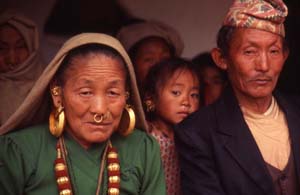 The main living and sleeping area, including the kitchen hearth, is on the ground floor. Grain, seeds, tools, and different sorts of family valuables are ordinarily stored on the second floor. Cattle is kept in shelters built in the vicinity of the house.
The main living and sleeping area, including the kitchen hearth, is on the ground floor. Grain, seeds, tools, and different sorts of family valuables are ordinarily stored on the second floor. Cattle is kept in shelters built in the vicinity of the house. 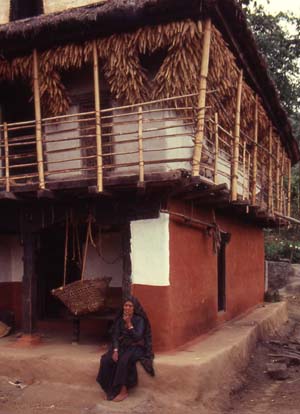
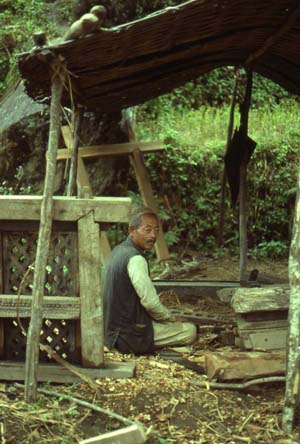
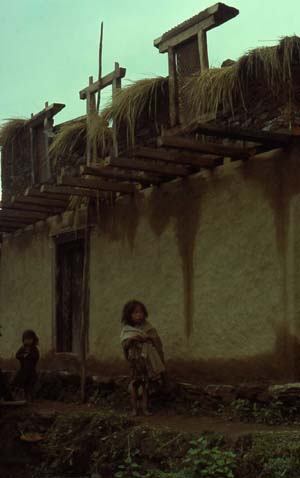
No comments:
Post a Comment